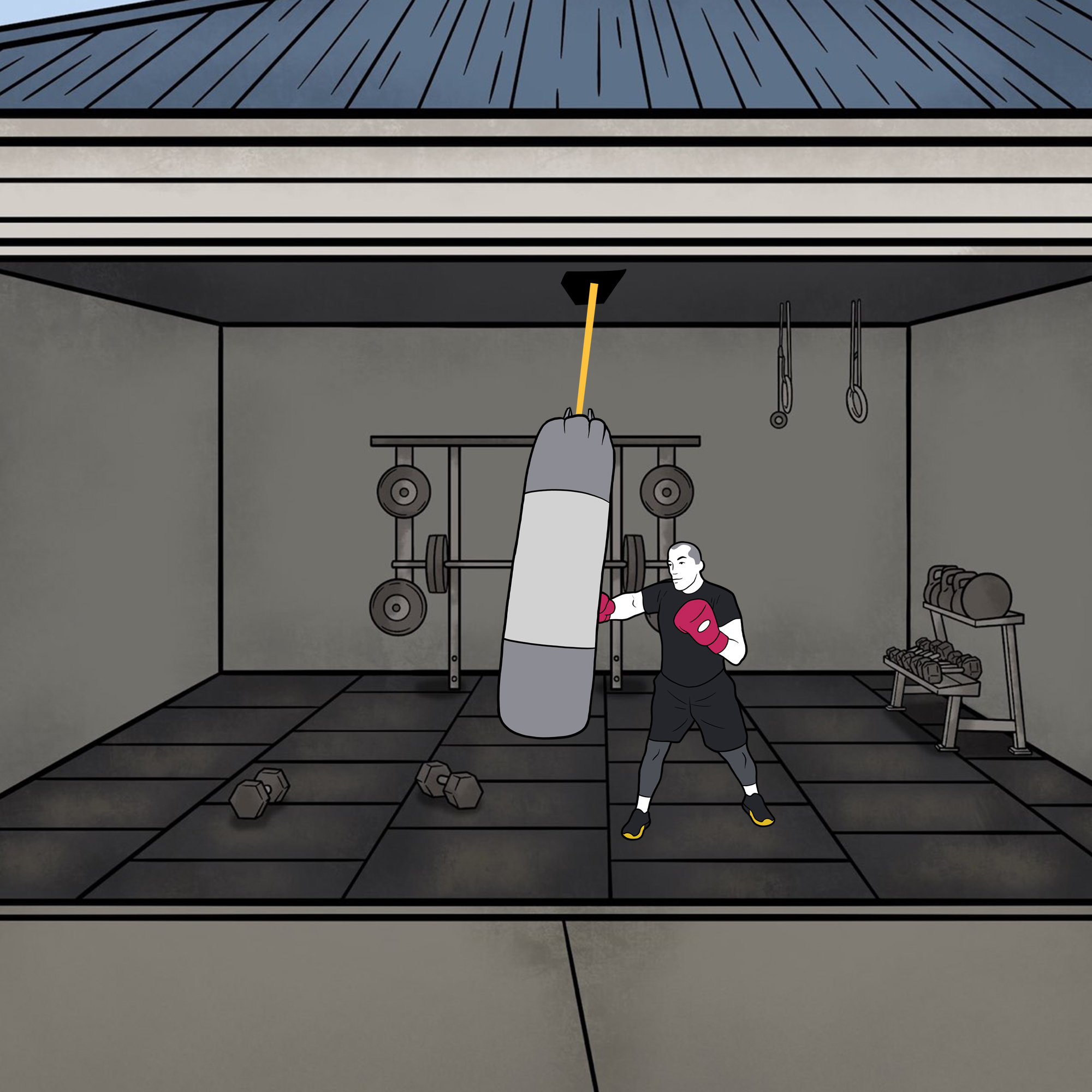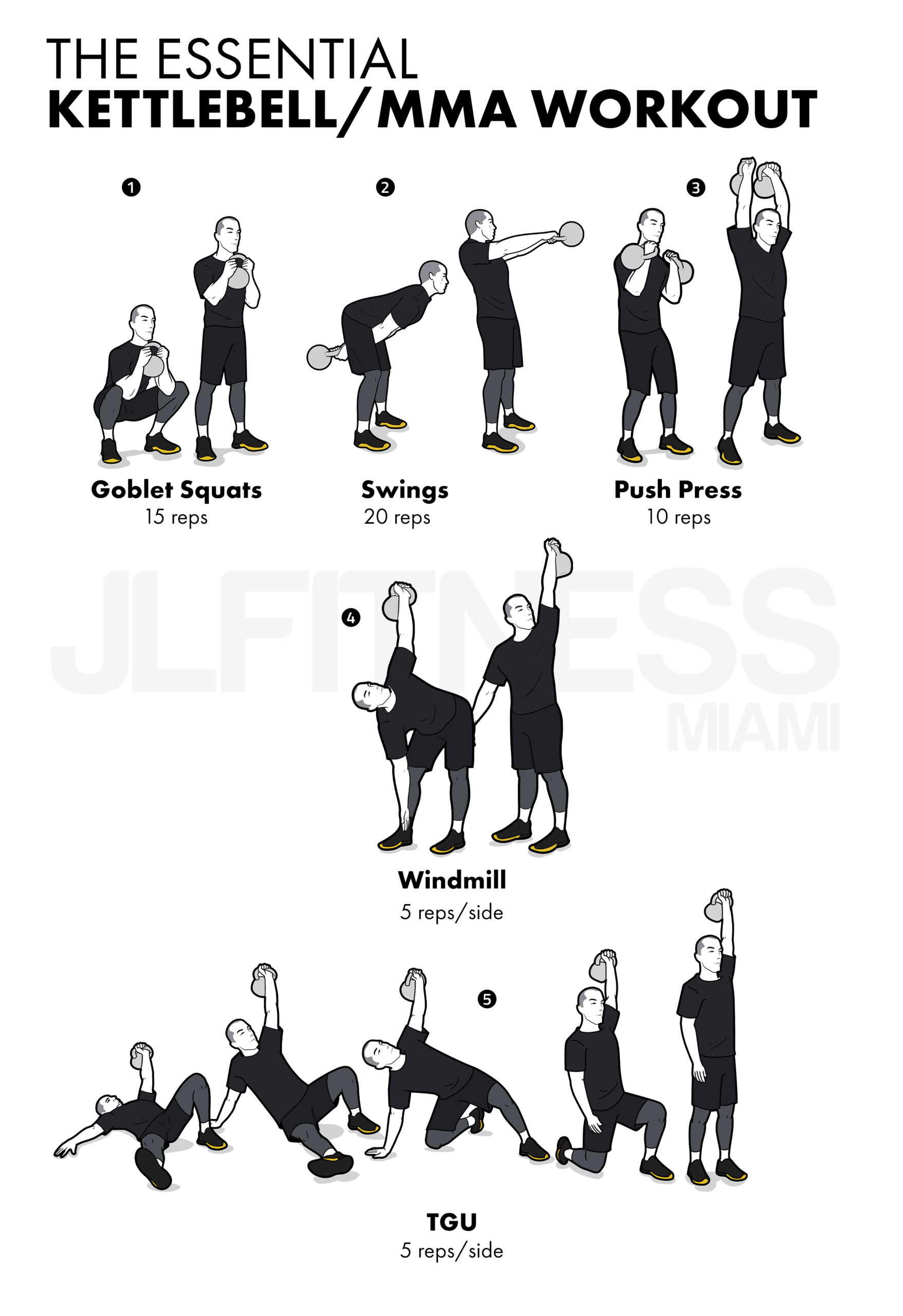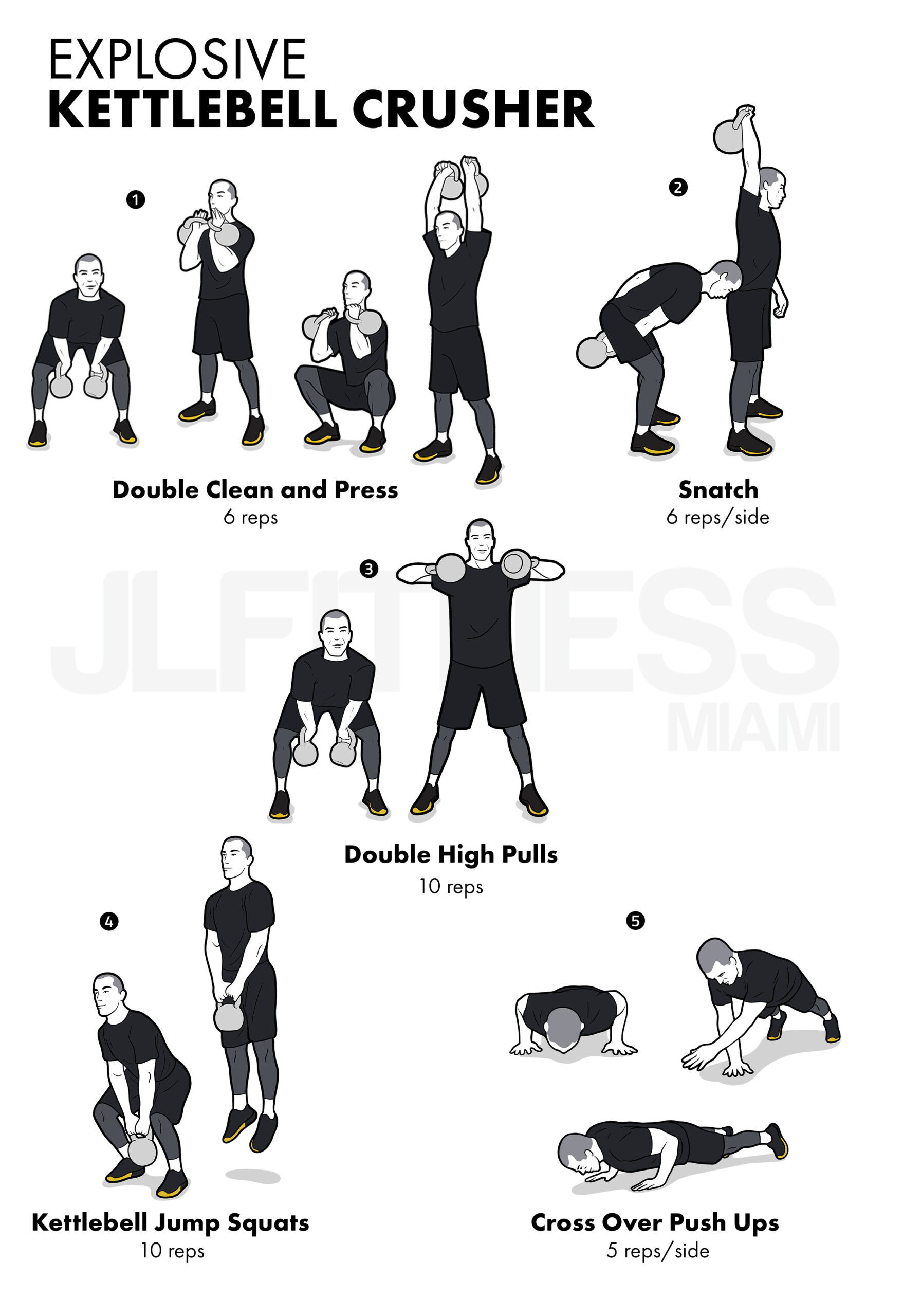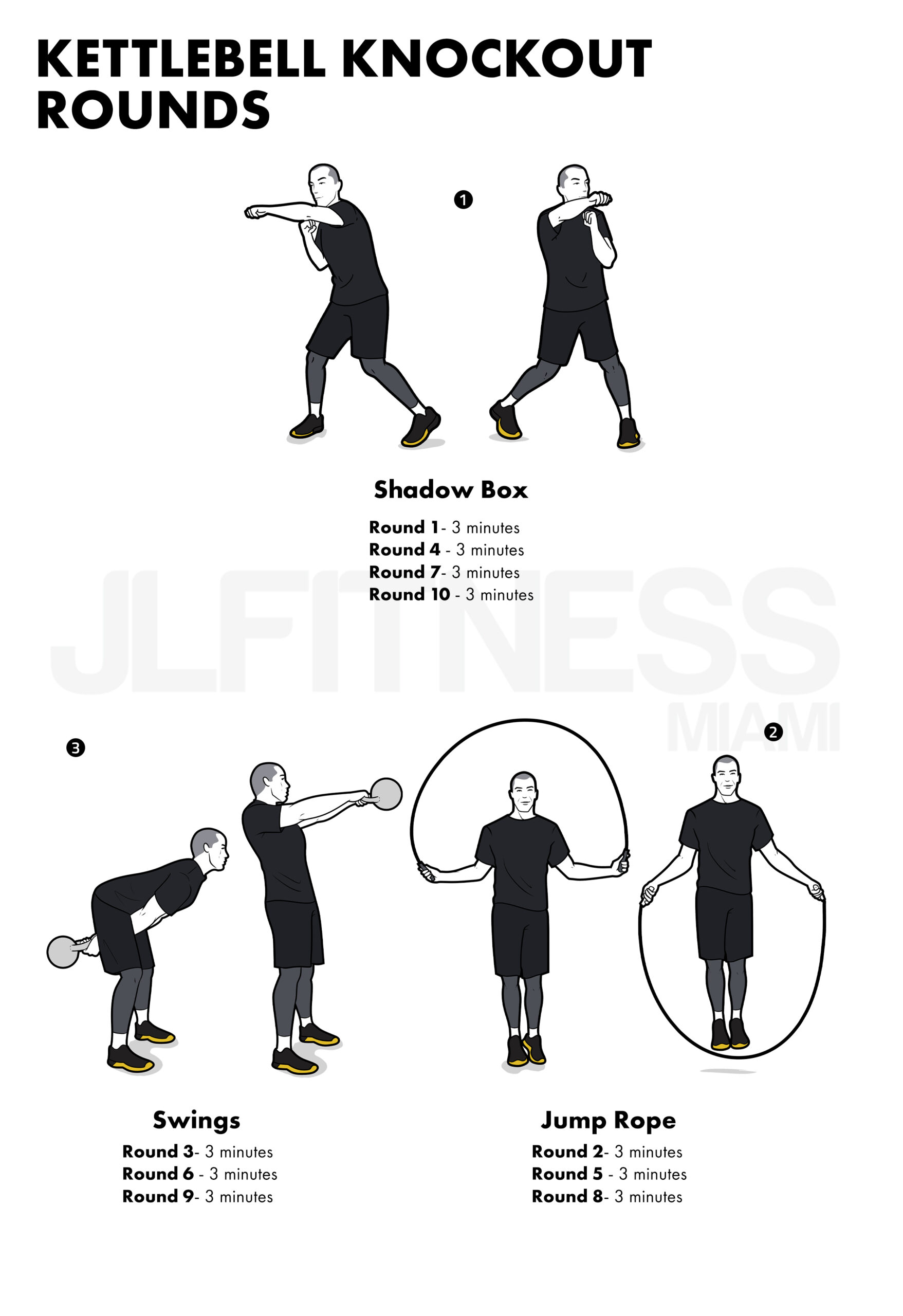MMA Kettlebell WorkoutsDeleted:
Wod
Deleted:
For years, I’ve witnessed the transformative power of kettlebells, not just in conventional fitness routines but notably in the world of combat sports.
Martial artists, from the grassroots levels to the elites of MMA, are always in pursuit of training methods that give them the edge, both in strength and endurance.

Enter the realm of kettlebell training, a dynamic tool that perfectly complements the demands of MMA. As someone deeply entrenched in both the kettlebell and martial arts (in my case, boxing), I’m thrilled to guide you through how kettlebells can elevate your MMA game to unparalleled heights.
Note: Even if you don’t practice any MMA sport, you can still benefit from the engaging workouts and methods that you will find in this guide.
Why Kettlebell Training is Essential for MMA Fighters
In the fiercely competitive world of MMA, an athlete’s training isn’t just about mastering punches, kicks, or grappling maneuvers—it’s about comprehensive conditioning.
The sheer versatility of the kettlebell mimics the unpredictable and dynamic nature of an MMA bout. With every swing, press, or snatch, a fighter isn’t just building brute strength but is also cultivating the endurance, balance, and functional power that’s essential in the cage.
The asymmetry of the kettlebell forces our core to engage in a way few other tools can replicate, simulating the twists, turns, and explosive movements of a real fight. In essence, if MMA is a symphony of physical prowess, then kettlebell training is one of its most pivotal instruments.
Functional Strength Development
Kettlebells, with their distinct shape and uneven weight distribution, are designed to challenge the body in ways that conventional weights can’t. This uniqueness leads to a focus on functional movements, which are movements that mimic everyday actions or specific tasks. For an MMA fighter, functional strength isn’t just a buzzword—it’s a necessity.
1. Compound Movements: Kettlebell exercises often involve compound movements, which means multiple joints and muscle groups are engaged simultaneously. A kettlebell swing, for instance, isn’t just a lower-body exercise. It fires up the hips, engages the core, strengthens the back, and demands stability from the shoulders. Such comprehensive engagement mirrors the compound movements in MMA, where a punch isn’t just an arm action but a full-body coordinated effort.
2. Core Activation: Almost every kettlebell movement demands a strong core engagement. From the kettlebell windmill to the Turkish get-up, these exercises require a fighter to stabilize their midsection, providing a robust core foundation. In the octagon, a strong core aids in both offensive maneuvers and in absorbing impacts, ensuring a fighter remains grounded and powerful.
3. Balance and Stability: The offset nature of kettlebell weight means that while performing exercises, one has to counterbalance to maintain stability. This kind of dynamic stability training is vital for MMA fighters who often find themselves in positions where they need to exert force or defend while off-balance.
4. Explosiveness: Many kettlebell exercises, like snatches and cleans, require rapid, explosive movements. This explosiveness directly translates to the quick, powerful bursts required in MMA, whether it’s during takedowns, escapes, or strikes.
5. Mobility: Kettlebell workouts enhance joint mobility, particularly in the hips, shoulders, and thoracic spine. In the octagon, this increased range of motion can result in more fluid movements, better strike reach, and smoother transitions between positions.
Improved Cardio and Endurance
Kettlebell circuits, when structured appropriately, can be an embodiment of high-intensity interval training (HIIT). For MMA fighters, where bouts consist of bursts of explosive action followed by short recovery periods, HIIT is a crucial component for stamina building. Here’s why kettlebell circuits are tailor-made for this purpose:
- Intensity Variability: Kettlebell exercises can vary from low to high intensity, depending on the weight, repetitions, and specific exercise. This makes it possible to design circuits where intense exercises (like kettlebell snatches) are followed by lower intensity ones (like kettlebell windmills), replicating the start-stop nature of MMA bouts.
- Full-Body Engagement: Kettlebell circuits challenge almost every muscle group in the body. This total-body engagement means the cardiovascular system has to work overtime to supply blood and oxygen to various muscles, leading to an increase in heart rate and respiratory rate, hallmarks of HIIT.
- Metabolic Boost: HIIT is known for the “afterburn” effect, or excess post-exercise oxygen consumption (EPOC), where the body continues to burn calories at an elevated rate post-workout. Kettlebell circuits, with their intensity and full-body engagement, can induce this afterburn effect, contributing to improved metabolic fitness, vital for long bouts in the cage.
- Time-Efficiency: MMA fighters often have packed training schedules, with skill work, sparring, and other conditioning exercises. Kettlebell circuits, being intense and compact, can provide the benefits of extended cardio sessions in a fraction of the time, making them perfect for fighters with limited time.
- Mimicking Fight Conditions: The nature of HIIT—short bursts of maximal effort followed by recovery—mirrors the conditions of an MMA fight. A fighter might engage in a flurry of strikes or defend against an intense grapple, then have a momentary lull. Training with kettlebell circuits conditions the body to recover quickly and efficiently during those short breaks, ensuring fighters remain sharp and energetic throughout the bout.
For MMA fighters, stamina isn’t just about lasting longer—it’s about maintaining power, speed, and precision as the clock ticks. Kettlebell circuits, with their inherent HIIT characteristics, condition the body not just to endure but to thrive under the demanding, pulsating rhythm of a fight. By integrating these circuits into their training regime, fighters can ensure they’re as formidable in the last minute of a bout as they are in the first.
Core Strength in MMA
At its core (pun intended), MMA is a sport of kinetic chains, where power is transferred from one part of the body to another to execute a technique effectively. Whether it’s a spinning kick, a grappling transition, or an explosive takedown, almost every movement in MMA originates from or passes through the core.
Power Generation: Most striking techniques, be it punches, kicks, elbows, or knees, derive their power from the torque created by the twisting of the core. A strong core ensures that this torque is maximized, leading to more potent strikes.
Stability and Balance: During grappling exchanges or when fighters are attempting to maintain or regain their footing, a strong core helps stabilize the body. This stabilization is crucial for both offensive maneuvers, like securing a submission, and defensive ones, like preventing a takedown.
Absorbing Impact: A robust core acts as a shield, enabling fighters to better absorb body shots. This not only reduces the risk of injury but also ensures that a fighter isn’t easily winded by strikes to the midsection.
Enhanced Mobility: Core strength is vital for fluid movement in the octagon. Quick level changes, dodges, and directional shifts are all supported by a responsive and powerful core.
The Essential MMA Kettlebell Workout

The breakdown of the exercises:
Kettlebell Swings (Two-handed): The cornerstone of this workout, focusing on hip power and core engagement.
Kettlebell Goblet Squats:Working the lower body and core, while holding the kettlebell adds an upper body static hold component.
Kettlebell Push Press: Incorporating the explosive power necessary in MMA.
Kettlebell Windmills: Enhancing core strength, particularly the obliques, and improving shoulder stability.
Kettlebell Turkish Get-Ups: An all-encompassing exercise, focusing on full-body functional strength and mobility.
Instructions: Complete 3 rounds. Rest 20-30 seconds in between exercises.
Explosive Kettlebell Crusher

In MMA, explosiveness can make the difference between landing that knockout punch and just grazing your opponent. It’s not about just being strong; it’s about unleashing that strength rapidly.
The following workout is for a more experienced athlete.
Instructions: Complete 3 rounds. Rest up to 20 seconds in between exercises.
Kettlebell Knockout Rounds

In this workout, we’re going to mimic the timing of a boxing match. You will be doing 3 minutes of work, with 1 minute of rest.
If you can’t jump rope, do jumping jacks instead. Grab a manageable weight for the kettlebell swings.
Octagon Kettlebell Core

In the realm of combat sports, a fortified midsection isn’t just about aesthetics—it’s about foundational strength, balance, and resilience. The ability to absorb impacts, deliver potent strikes, and maintain stability during complex maneuvers largely hinges on core prowess. This workout dives deep into that philosophy, targeting the very core of your strength. Beyond the usual crunches and twists, we’re integrating essential pressing and rowing movements.
Instructions: Complete 3 rounds. Rest up to 30 seconds in between exercises.
As we conclude this exploration into the world of MMA kettlebell training, it’s clear that the fusion of these two disciplines offers fighters an unparalleled edge.
The kettlebell’s dynamic nature seamlessly complements the multifaceted demands of mixed martial arts, bridging the gap between raw power and functional agility. Whether you’re stepping into the octagon or simply looking to embody its spirit in your training, integrating these kettlebell workouts will undoubtedly fortify your physical prowess.
More Workouts
Full Body Workouts- 4 Day Week
Welcome to this week-long workout program designed to build strength, enhance mobility, and increase muscle endurance. Each day focuses on different muscle groups to ensure a balanced approach to fitness and to allow for optimal recovery. Monday: Kickstart the week...
3 Minute Circuits
Each workout in this post has 2 circuits. Do exercises 1,2 and 3 then 4,5 and 6.Do each movement for 1 minute and don't rest until you finish the 3rd movement for each circuit. Level 1: Complete 2 rounds of each circuit. Rest 2 minutes in between each round....



